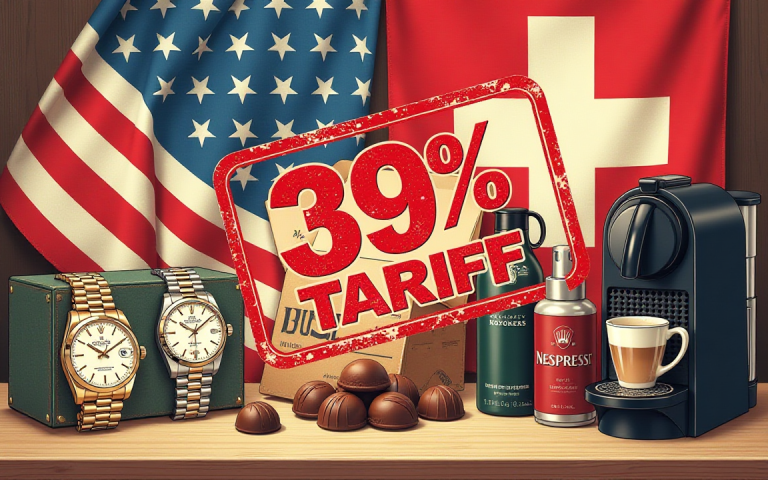Swiss exporters are bracing for the possibility of 39% US tariffs set to take effect Thursday, one of the highest rates applied to any country under Washington’s “reciprocal tariff” policy.
The announcement last week surprised politicians, analysts, and businesses who had anticipated a deal similar to the European Union’s 15% rate or the UK’s 10%.
The US trade deficit with Switzerland stood at $38.3 billion in 2024, largely due to the Alpine nation’s role as the world’s largest gold refining hub.
Gold and silver shipments are excluded from the tariff plan, as are pharmaceuticals — though medical devices remain in scope.
Sector-specific tariffs on pharma products could still arise under a separate Section 232 investigation.
For consumers, the most visible impact would be on Switzerland’s high-end exports, from Rolex watches and luxury jewelry to La Prairie skincare and artisanal chocolates.
Economists warn that if the higher tariffs remain in place for an extended period, the consequences could include slower growth, job losses, and weaker stock prices in Switzerland.
Watches, skincare, and luxury goods at risk
Swiss watches, the country’s best-known export to the US, could see significant price increases.
The US was the largest overseas market for Swiss watches in 2024, with exports worth 4.37 billion Swiss francs ($5.4 billion).
A Rolex Submariner, for example, could rise from $10,000 to nearly $14,000 under the new tariffs, according to Bob’s Watches CEO Paul Altieri.
Analysts at Vontobel warned that Swatch could be especially vulnerable, with shares already down 2.3% on Monday.
While luxury brands such as Rolex, Patek Philippe, and Audemars Piguet may have more flexibility to raise prices due to strong demand and waiting lists, mid-market watchmakers could struggle.
The impact extends beyond watches. High-end skincare brands like La Prairie, spa supplier Valmont, and nail care company Mavala could face higher costs unless covered by pharmaceutical exemptions.
Luxury jewelry houses under Richemont, including Cartier and Van Cleef & Arpels, may also raise prices, with BofA Securities estimating 7% of Richemont’s inputs are exposed to the tariffs.
Chocolate and coffee producers brace for impact
Swiss chocolate makers face steep challenges. Chocosuisse, the country’s chocolatier association, warned that smaller producers without US factories — such as Camille Bloch and Läderach — would be hit hardest.
With the Swiss franc appreciating against the dollar, the effective price increase could be closer to 55%.
For many chocolatiers, producing in the US is not an option if they wish to retain the coveted “Swiss chocolate” label.
In coffee, Nestlé’s popular Nespresso brand could also face higher import duties, as all its capsules are manufactured in Switzerland.
While most of Nestlé’s US sales come from local production, Nespresso is an exception and could see modest exposure to the tariffs.
Negotiations between the US and Switzerland are ongoing, but unless an agreement is reached soon, American consumers may find their favorite Swiss products significantly more expensive in just days.
The post How Swiss tariffs will affect US customers appeared first on Invezz

